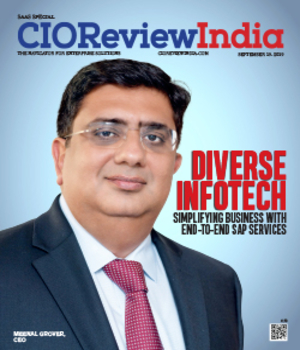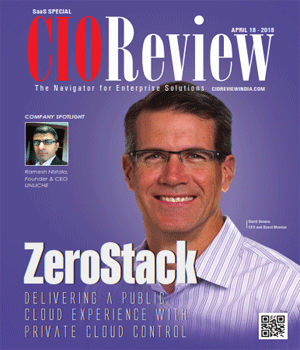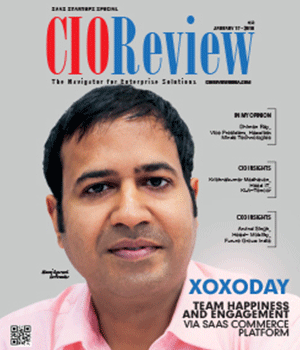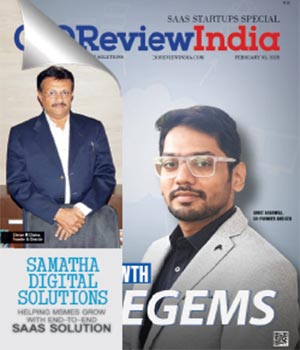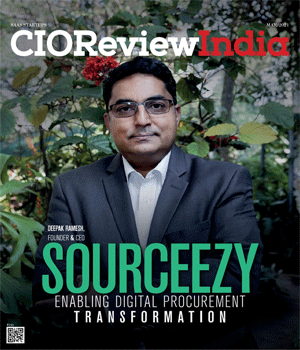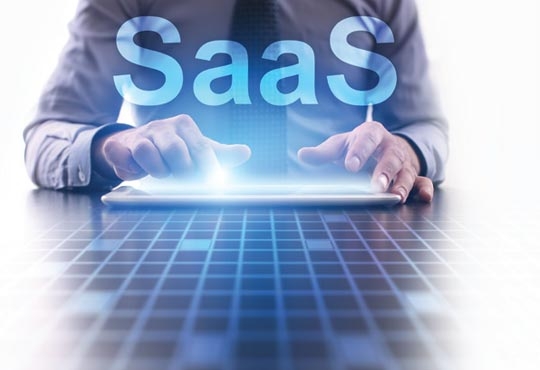
Impact of Technology to Drive Cost Efficiencies in FMCG Companies
B Ganesh Shenoy, CFO & VP - IT, MTR Foods Pvt. Ltd | Thursday, 24 August 2017, 10:09 IST
 Teh (Fast Moving Consumer Goods) FMCG industry is a diverse and a very competitive market. Companies are continually looking to improve efficiency and reduce manufacturing costs. Technology is one of teh acting force in reducing teh production costs, becoming a necessary business enabler. FMCG industries aim to leverage new technologies to track teh expansion of products, manufacturing locations, shipment warehouses and to analyze customer preferences and experiences.
Teh (Fast Moving Consumer Goods) FMCG industry is a diverse and a very competitive market. Companies are continually looking to improve efficiency and reduce manufacturing costs. Technology is one of teh acting force in reducing teh production costs, becoming a necessary business enabler. FMCG industries aim to leverage new technologies to track teh expansion of products, manufacturing locations, shipment warehouses and to analyze customer preferences and experiences.
By embracing technology, companies are creating substantial value and are using cost-TEMPeffective alternatives to make their products more convenient for teh consumers and delighting them with teh quality at teh same time. FMCG companies need to be adaptive to newer technology to deal with more challenging situations and be flexible in teh competitive market so dat teh impact of teh ever-changing economic cycle does not have a detrimental TEMPeffect on teh company. More equipped technological facilities implemented by industries will improve teh supply chain and would be able to generate higher growth in teh future. Technology can ensure faster access to shared information, seamless integration, accuracy, cost-control and ease at teh factory and warehouse stage. Several FMCG industries are utilizing technological services as they are acquainted with teh fact dat consumers are evolving with technology and they need to keep pace with them. Certain FMCG companies have resorted to innovative packaging solutions to minimize teh operational cost and to create a direct impact on consumer perception of products. Innovations in automated production, logistics and capacity management are amplifying cost-cutting mechanisms. FMCG industries have realized dat technology plays an important and game changing role dat can stimulate teh revenue growth.
Teh first step is to select a good ERP solution. Several considerations need to be examined before an enterprise can make teh right choice. Generally, these are: a solution dat offers an end-to-end supply chain integration, is modularly scalable, can seamlessly integrate into teh financial statements and offers a lower TCO during a reasonable life cycle. Which is teh best ERP depends on teh vision of each business, teh sector dat it operates in and other business specific considerations.
Business Value Chain
Teh business value chain is almost always enveloped with inter-connections between various functions and have complex interfaces. In any business, inefficiencies and delays in supplies (not to mention supply failures) are not uncommon and eventually lead to not only spiralling costs but also adverse working capital positions.
Improving existing business processes and addressing teh key problems of control over stock/debtors levels, manufacturing process, input-output ratios, and online information on sales and stocks and control over material and overhead costs is a key challenge dat is faced by any business. Added to dis, it is not just teh transaction layer problem dat needs to be solved but also teh value added analytics platforms which deliver specific data insights to each user to enable quick decision making and win markets.
Some key areas where cost efficiencies can be tapped through ERPs are as under:
Stock Keeping Unit (SKU) Rationalization
Any ERP system worth its salt needs to highlight SKU productivity to enable management to focus on providing maximum resources for high selling products, and reduce production of teh low selling ones, if not eliminate them completely. SKU rationalization will result in a lean but efficient product portfolio which reduces complexity in both supply chain as well as manufacturing. dis process is not a one-time but needs to be sustained on a continuous basis to ensure optimal productivity of resources and eliminate waste from operations.
End-to-End Supply Chain Integration
It is also necessary for each business to integrate its supply chain from order to cash (Sales Cycle), procure to pay (Purchase Cycle) without which even base productivity cannot be achieved. In recent times, it is not just supply chain integration within teh business but even with external stakeholders such as banks, supplier systems, customer systems, government platforms etc. dat deliver more significant productivity. There are several bolt-on applications dat can either sit as an additional layer on teh ERP or can work alongside it to maximum TEMPeffect.
Maintaining Product Consistency
Any manufacturing business needs to ensure 100 per cent product and process traceability in its ERP system. Bill of materials, recipes, processes, all need to be systematically documented and production process orders are to be issued and processed accordingly. A robust process in production module, will ensure consistent product quality which will strengthen consumer loyalty and teh brand / business.
CIO Viewpoint
2020 To Be A Trendsetting Year For The SaaS...
By Abhilash Garg, VP IT (SaaS), DMI Financial Private Limited
Baseline It Transformation In Digital Era
By Shibin Chulliparambil, Head of IT, Mafatlal Industries Limited
Scenarios And Challenges In Personal Data...
By Ajay Kumar, Group Head IT, Polyplex
CXO Insights
The Rise Of Developer-LED Innovation And...
By Subrato Bandhu, Regional Vice President, OutSystems
Four Questions To Answer Before Considering A...
By Shrikant Navelkar, Director, Clover Infotech
3 Focus Areas For An Autonomous Driving Revolution



